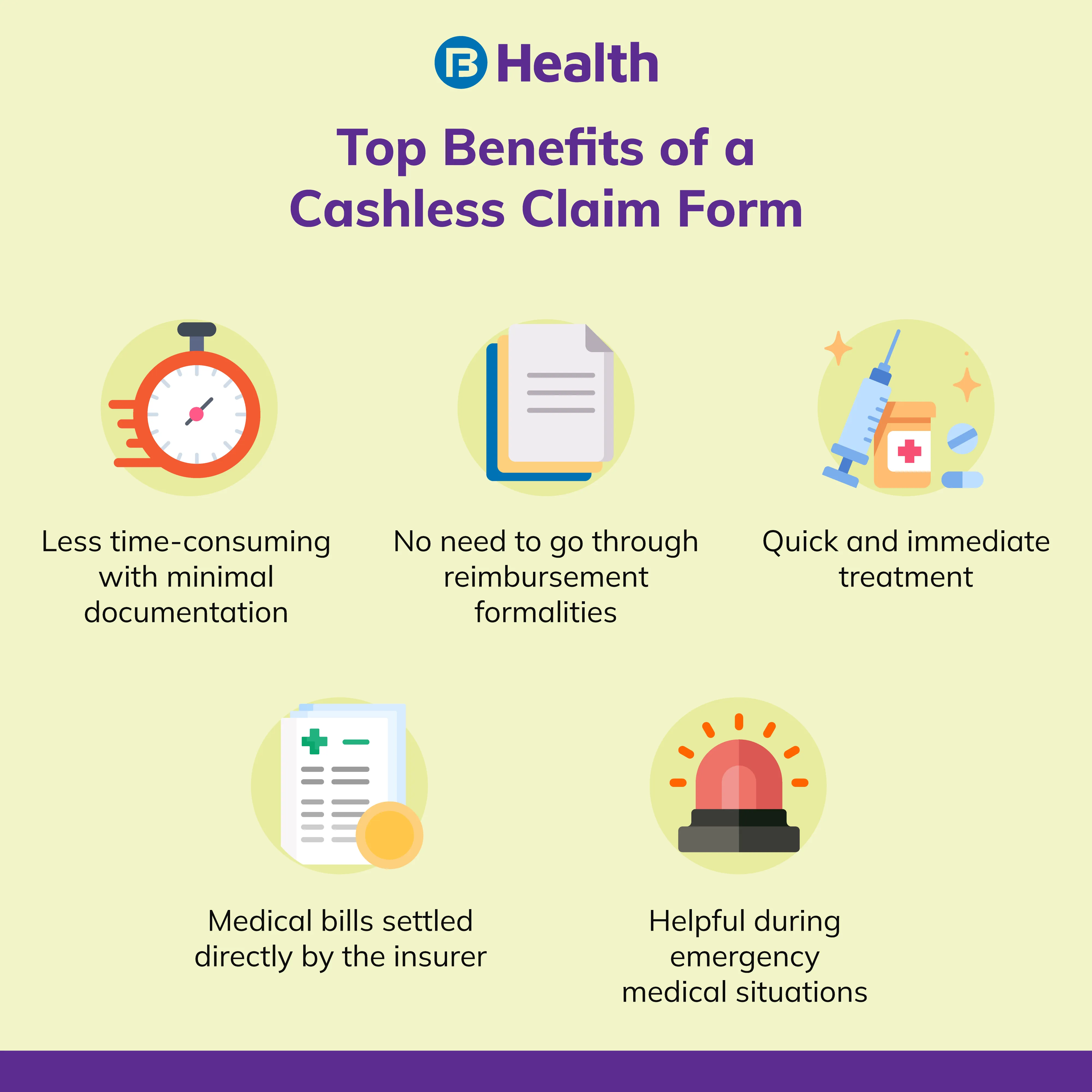Aarogya Care | 6 min read
How to Fill Up Cashless Claim Form: Remember These 7 Easy Steps!
Medically reviewed by
Table of Content
Key Takeaways
- Getting claim benefits is the main advantage of a policy
- There are two modes: cashless and reimbursement claim
- Follow this guide to fill the cashless claim form properly
Health Insurance is a safety net packed with features and benefits. One of the most important aspects of health insurance is to claim the benefits. According to your insurance policy and financial budget, you can either make a reimbursement claim or a cashless claim. A cashless claim facility will be available against listed conditions when you are treated at an empaneled hospital. The health insurance policy has to be in your name so that you can avail of claim benefits [1].
The process for cashless claims differs for planned and emergency treatment. In case of predetermined treatment, you have to inform your insurer at least four days in advance before hospitalization. In case of emergency, contact your insurance provider to know about the nearest network hospital. Once you and the hospital fill out the respective parts of the claim request form, the hospital authority sends it to the insurance provider via mail or post.
To get cashless claim benefits, you have to follow a specific procedure that involves [2]:
- Filling up the claim form
- Submitting the claim form along with relevant documents
After proper verification of the form and documents, the health insurance provider will approve your claim request, and you will receive the claim amount with additional benefits as specified in your policy. But, if you miss filling any important section of the form, it may lead to a claim rejection. Read on to get a better insight into the cashless claim process and a detailed guide to filling up the claim form.
Additional Read: Cashless Claim: Its Process, Documents Needed, and The Top 4 BenefitsHow do you get a cashless claim form?
Your claim form is usually available at the hospital desk where you are undergoing your treatment. You can also find it online on your health insurance provider’s website.
What are the basic details you should know before filling out the cashless claim form?
- Reason for visiting the hospital (accident, injury, illness, etc.)
- Name of the insured and name of the person who will receive the services of the health insurance plan
- Policy number

How to fill out a cashless claim form?
Your cashless claim form contains seven sections. Each section has different details. Read on to understand what details are required in each section and how to fill them:
Details of the provider
Under this section, you have to fill in the following details:
- Hospital/ Nursing home name
- City, state name, and landmark
- Contact no/ Fax no/ Email ID of the hospital
- Hospital ID (unique number of the hospital by which it is identified globally)
- Rohini ID (this is the identification number of the hospital that is a part of the network Rohini (Registry of Hospitals in Network of Insurance)
- TPA desk number (number of the third-party administrator that acts as an intermediary between you, the hospital, and your insurance company)
Details to be filled by the insured/patient.
This section covers the patient details such as:
- Name, gender, and date of birth
- Current address and contact number of the insured patient
- Insured card ID number
- Occupation of insured patient
- Policy number
- Employee ID and details (name of the company)
- Name and contact details of family physician

Details about the patient’s conditions and treatment procedure – to be filled by the treating doctor/hospital
A few particulars from this section are:
- Name and contact number of the treating doctor
- Nature of illness/disease with presenting complaints (the problem that the insured is facing)
- Relevant clinical findings (the reported or suspected diagnosis and clinical findings)
- Duration of the past or present ailment
- Date of the first consultation (date on which the insured patient went to the doctor for the first time to seek diagnosis)
- ICD 10 Code (the code applicable to the insured patient according to ICD 10 codes for diseases, their symptoms, any unusual findings, situations, and external reasons for getting injured or having a disease)
- The proposed line of treatment (indicates what kind of medical treatment the insured patient will be receiving)
- If surgical, the name of the surgery
- ICD PSC code (the code of medical classification used for procedural coding)
- Details of any other treatments provided
- Details of how the injury occurred (whether it was an accident or would you want to report to the police or not)
Details of the patient admitted – to be filled up by hospital authority.
In this section, the following details of the insured patient have to be filled in.
- Date and time of admission of the patient to the hospital
- Whether it was an emergency or planned hospitalization
- Expected number of days required for stay in the hospital (ICU or Room type)
- All expenses during hospitalization are bifurcated into room charges, operation, treatment, and medicine charges
Details of past medical history – to be filled by hospital
Under this section, the hospital authority lists the following.
- Whether the patient has previously suffered from any chronic illness
- The exact time when the illness was diagnosed
If the insured patient is not suffering from any chronic illness, this section can be left blank.
Details to be filled in a declaration.
Under this section, both the insured patient and the hospital file a declaration. First, read the declaration on page 3 of the claim form carefully and sign it. Then you can sign the declaration statement on page 2. By doing so, you can be well aware of the terms and conditions and avoid unnecessary hazards related to your claim.
Documents to be attached with the form
When you submit the form, make sure to attach the following documents:
- Discharge summary mentioning the details of treatment undergone, along with all bills raised by the hospital
- Cash memos of medicines bought from chemists or hospitals along with valid prescriptions
- All lab reports and receipts, backed by notes from the attending doctor
- A certificate issued by the surgeon in case of an operation, along with the receipt and bill
- Certificates issued by attending doctors or surgeons mentioning they have completely recovered
Always fill out your claim form carefully and be aware of the terms and conditions of your health insurance plan. Make sure that the details in your form are not invalid. Else, you will have to go through more hassles to get it corrected. After filling out the form, submit your original documents like bills and medical papers. Make sure you have photocopies of all the documents submitted for the record.
For affordable health insurance plans, you can browse through the Aarogya Care range of policies on Bajaj Finserv Health. With comprehensive medical coverage covering both illness and wellness needs, these plans can cater to your emergency medical requirements. With the features of these plans like huge network discounts, doctor consultation reimbursements, and competitive cashless claims, prioritizing your health becomes super easy and affordable too!
References
Disclaimer
Please note that this article is solely meant for informational purposes and Bajaj Finserv Health Limited (“BFHL”) does not shoulder any responsibility of the views/advice/information expressed/given by the writer/reviewer/originator. This article should not be considered as a substitute for any medical advice, diagnosis or treatment. Always consult with your trusted physician/qualified healthcare professional to evaluate your medical condition. The above article has been reviewed by a qualified doctor and BFHL is not responsible for any damages for any information or services provided by any third party.



